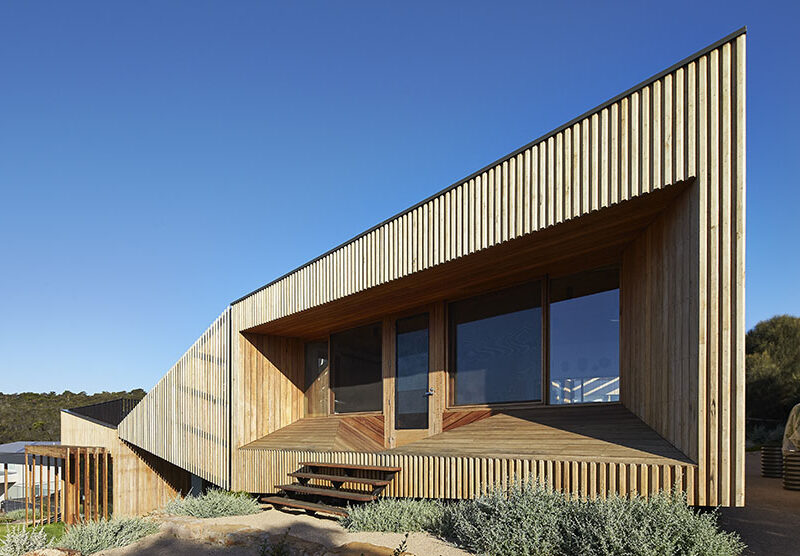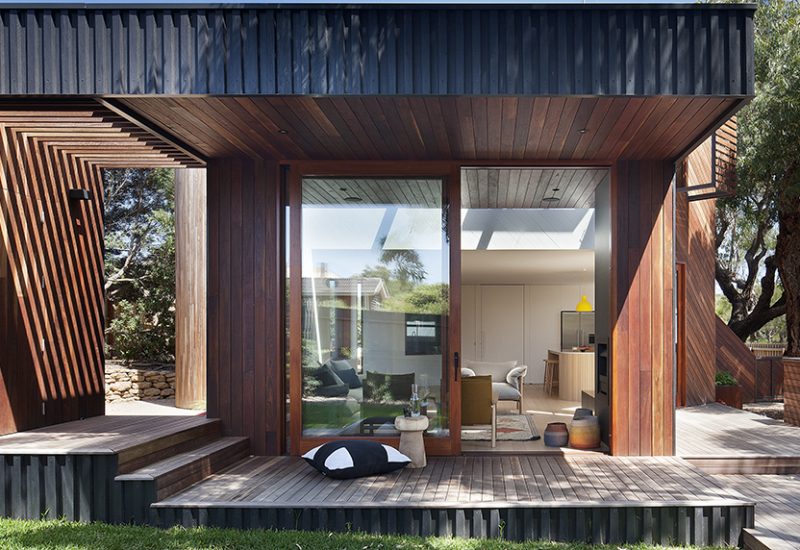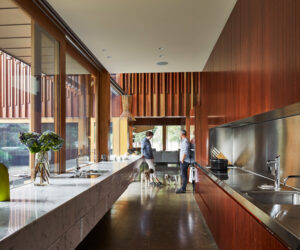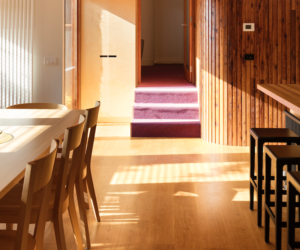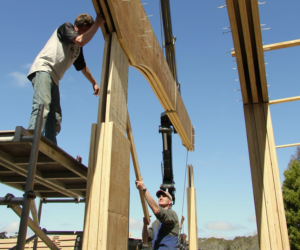How to choose the right external timber finish
A lot of time and effort has gone into designing, selecting and installing your external timber. Whether it’s a deck, joinery or cladding – to reach its full potential, it’s important to choose the right finish. When selecting external finishes, it’s important to strike a balance between aesthetics and durability. In this article, you’ll find an overview of external timber finishes to help make your choice easier – and links to more information on the WoodSolutions website.
Before you begin constructing your external timber project, we advise you and/or your design team to consult the information in this guide. If it’s a significant project and the designers are unfamiliar with the topic, they should also check out AS/NZS 2311 Guide to the Painting of Buildings and seek advice from the manufacturers of appropriate finishes – there’s valuable information on their websites.
There are many things to consider when finishing external timber elements. Whether it is used in vertical screening, horizontal cladding, external joinery or decking will affect your choice of finishing system because each involves different levels of exposure, cost, ease of replacement and potential for abrasive wear.
The characteristics of the timber used as a substrate for finishes are also important. These include the properties and performance of the species, surface texture, moisture content, section profile, material features and any existing wear or surface checking. For more information on these characteristics and how they can affect the performance of a finish, you can download this free WoodSolutions guide.
Having timber outdoors means constantly exposing the material to the elements. Weathering is the greying and cracking of a timber surface caused by light, dust or recurrent wetting and drying. Weathering doesn’t just affect the appearance of timber: it can reduce the performance of finishes too. Bear in mind that today, many people prefer to let some or all timber elements weather to a natural grey colour.
No matter what your finish (transparent, translucent or opaque), it will provide some degree of film or coating on the surface which can fill voids in the microscopic surface structure. Finishes are usually either film-forming or penetrating, but will generally have some characteristics of both.
Film-forming and penetrating finishes vary both in thickness and in the finished shape of the surface they create. As the name would imply, film-forming finishes create a distinct layer on the surface of the timber, creating a smooth surface. Penetrating finishes tend to follow the contours of the timber surface, emphasising the grain.
Both types of finishes have merits. Because of their thickness, film-forming finishes are more resistant to wear. Penetrating finishes, however, are better equipped to handle the movement of timber caused by moisture variations. For more information on each of these finishes, have a look at this WoodSolutions guide.
Let’s examine some other available external timber finishes. Transparent coatings and stains are typically a combination of film-forming coating and penetrating oil with added preservatives, fungicides and colourants. The combination of oil and coating offers the best of both worlds in terms of appearance and protection. Please remember that the results will vary depending on the product used and the manufacturer’s specifications.
Penetrating oil finishes aren’t usually long-lasting in external applications, their endurance will depend on the exposure to weather, wear and moisture. Paints are more durable because they shield the surface from water, sunlight and abrasion. Because timber expands and contracts with changes in moisture content, the paint needs to be flexible.
Choosing the right finish for your external timber may seem tricky. To make it easier, check out Wood Solutions’ Finishing Timber Externally guide, available here, or go to the WoodSolutions website and look at the Expert Advice database of questions and answers – you’ll find the search function is quick and easy.
